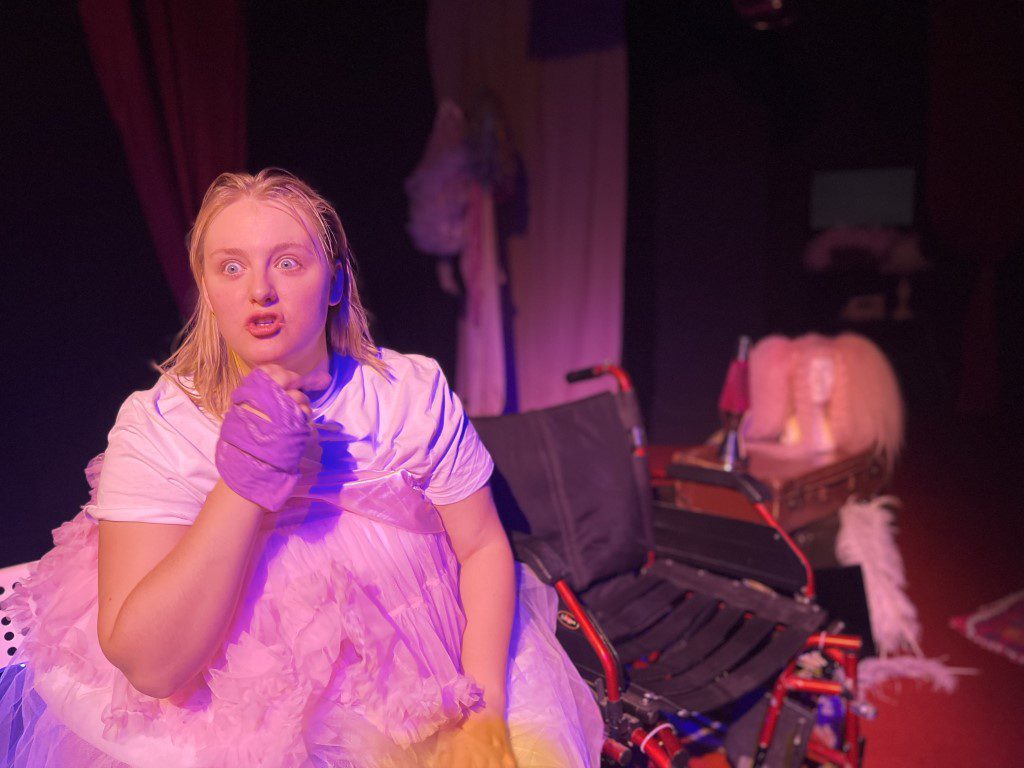A young woman bounces onto the stage full of energy and dances her heart out. From then on, this one-women show takes off and keeps its momentum throughout. In an excellent performance by Nancy Brabin-Platt, the play crashes through any preformed barriers on sexual identity you might have. Various themes come up which rightly need addressing and which so many women, gays and trans would identify with. This is done by Brabin Platt taking on different personae and having conversations between them and her drag herself. She plays out her conservative blinkered mother, a heterosexual man humping his way round the furniture in a monstrous groin-jerking dance and finally as a drag queen in a carnivalesque display of exaggeratedly feminine taffeta, hair and make-up.
We follow the 18 year old Maxine’s on a journey through her life – choosing clothes, taking a bus and being insulted at a gay club by a gay man who does not want lesbians. ‘When a queer person hates you, it hits you harder’ she says.
This is not a play about gender uncertainty. Maxine is very clear what she is: ‘a big, fat lesbian’ she proclaims and she responds best to a performer who greets her with ‘hello little dykeling’. One of the ways she wants to express herself is through the drag world’s carnivalesque parody of the expectations of what a woman is, a grotesque satire of society’s version of femininity.
Life’s a Drag takes place in the little-examined world of lesbian drag queens. Perhaps we should say non-binary drag queens as one of the strands in this piece is a trans woman being admitted to an all-woman drag queen festival which raises the ire of TERFs (Trans Exclusionary Radical Feminists) who issue death threats to the lesbian organiser. ‘TERFs are worse than the men’, says Maxine. Her friend Beth’s opinion is, ‘Men hate women and women hate weirdos so being a weirdo woman you‘re fucked from both sides.’
Violence is an ever-present fact of Maxine’s life, to the extent of musing whether it is better to have a credit card or a bunch of keys as a handy weapon to repel street attackers. Part of the not very complex storyline to this play is an attack on Beth at a railway station, incapacitating her and propelling Maxine to do Beth’s drag queen act in her place.
The set by Fifi Bechler was amazing and needs a special mention. It was bursting with action, made up of various TV sets playing 1930s horror and romantic films, all of which show women in subservient roles. This is who we should be, says the media….and it is Maxine’s job to disabuse the world of these images in a huge FU.
Nancy Brabin-Platt fills this short, exciting piece with her character and imagined locations – bar, club, hospital – and at one point an entire lesbian rugby team. It is truly a fun night out.

